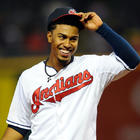With a 9-3 victory over the Tigers on Sunday, the Indians extended their winning streak to nine games in a row. The Rangers are the only AL team with more wins over their last 20 contests than the Indians, and they're widely regarded as the best team on the Junior Circuit. The Indians, in other words, are in a good place.
Because the Indians served as a trendy -- you might say fashionable -- pick to win the Central entering the year, it's hard to categorize their success as a surprise. Nonetheless, there's always something to be gleaned from looking at why a team is good. So let's do what smart people do and break the Indians down to their essence -- to their structure -- and examine on a unit-by-unit basis why this is working.
Offense
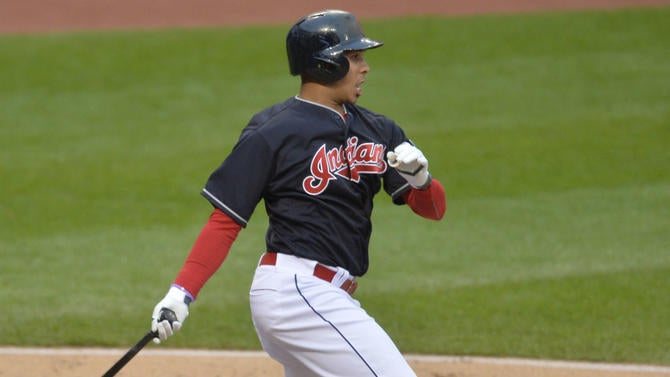
Cleveland ranks eighth in the majors in runs per game. Their park-adjusted, catch-all metrics aren't as impressive, but there's something to be said about the Indians being the game's best basestealing team. They rank third in steals and have a better success rate than both the teams ahead of and behind them.
| Team | SB | Success rate |
| Brewers | 64 | 72.7% |
| Astros | 59 | 72.8% |
| Indians | 58 | 80.6% |
| Padres | 58 | 75.3% |
| Diamondbacks | 54 | 77.1% |
If you had to guess, you'd probably say that Michael Brantley, Yan Gomes, and Jason Kipnis were leading the charge. You'd be wrong. Brantley remains on the disabled list, having contributed little to this year's team. Gomes, well ... put it this way: 204 players entered Sunday with at least 200 plate appearances, and his 49 OPS+ was the third-worst among the group. (Thank you, Erick Aybar and Chris Coghlan.) Kipnis has been productive, though his 97 OPS+ would be a relative disappointment.
Instead the Indians have been paced by Francisco Lindor (we'll touch on him more in a moment), Carlos Santana, and some well-timed ascents by Jose Ramirez and Tyler Naquin, two homegrown players making the most of their opportunities. Ramirez had previously looked to be a middle infielder without the offensive chops to start. Yet he's done well by hitting for average and getting on base, and he's contributed to the stolen-base frenzy, right alongside Lindor and Rajai Davis. Naquin, meanwhile, was supposed to be a demon on defense. Turns out he can raise mischief at the plate, too, since he entered Sunday hitting .324/.380/.577 with five home runs.
You'd be fair to wonder if either -- particularly Naquin, whose strikeout rate is pushing 32 percent -- will keep this up. Still, they've helped buoy an Indians outfield that is without Brantley and that lost Marlon Byrd to a PED-related suspension. Besides, the hope heading forward actually rests on the shoulders of the three aforementioned Indians. If Brantley, Gomes, and Kipnis can play like their usual selves, then that should more than offset any decline from Ramirez and Naquin. And if those two continue to play well? Then this offense has more growth potential than we realized.
Defense
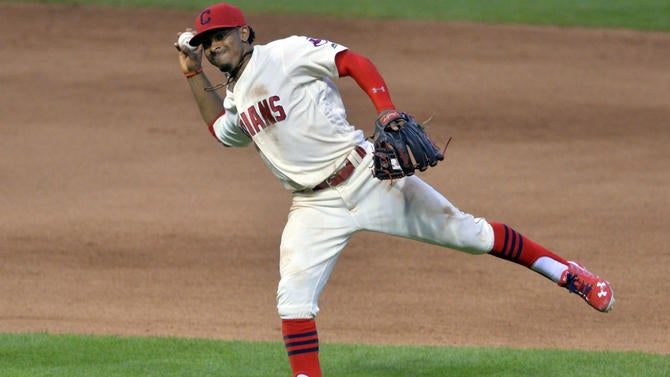
This won't surprise anyone who pays attention to these sorts of things, but the Indians have one of the best defenses in baseball. On the season, they rank third in the majors in defensive efficiency. That's a fancy way of saying that they convert the third-most balls into play into outs, or, for the more advanced thinkers in the audience, that they allow the third-lowest batting average on balls in play.
One area where the Indians excel in particular is turning grounders into outs. Here's where we talk about Lindor, whose defensive efforts are more joy-inducing than a selfie-snapping lemur. Lindor combines a preternatural feel for playing shortstop with all the requisite physical attributes needed to be a great defender there. He has a good arm, soft hands, quick feet, and impeccable body control. There's an argument to be made that he's the best defensive shortstop in baseball -- or will be soon -- and if he continues to post above-average numbers at the plate, then it's a matter of time before he's recognized as one of the top players in the game.
While Lindor is the standout, the Indians do feature other good individual defenders. Juan Uribe and Mike Napoli don't look like much at the corners, but each is a surprisingly competent defender. Naquin and Ramirez are two former left-side infielders manning corner-outfield posts, and so on. All and all, defense should remain one of the Indians' strengths. One odd note: Gomes, who has historically graded as an above-average framer, has heretofore posted below-average numbers, per Baseball Prospectus. Make of that what you will.
Rotation
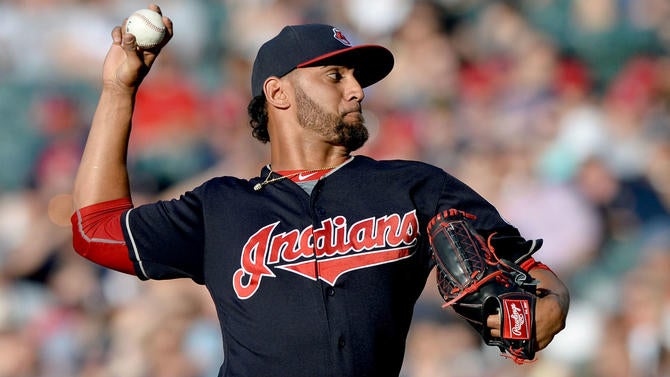
The anticipated backbone of the Indians entering the season, Cleveland's rotation has lived up to its billing. Collectively, the group entered Sunday with the sixth-best ERA in baseball -- a mark skewered by Cody Anderson's poor run of starts.
None of the Indians' current starters has an ERA+ lower than 125, and while some of that speaks to the team's defense, a lot of it has to do with the pitchers themselves -- a dynamic that bodes well heading forward. Danny Salazar's wildness hasn't prevented him from making a case to start next month's All-Star Game; Corey Kluber and Carlos Carrasco are performing like the safe bets they appeared to be; and Trevor Bauer has returned from his bullpen exile in a way reminiscent of Carrasco a few years back.
There's also Josh Tomlin, the oddball command-and-control artist sprinkled among a former Cy Young winner and a bunch of stuff-rich power arms. The key to Tomlin's success is limiting baserunners ahead of the home runs he inevitably allows, and, so far, he's on the right side of the slope. Most importantly, however, is how Tomlin's statistics tell his story perfectly: he has the highest hit rate, the highest home run rate, the lowest walk rate, and the lowest strikeout rate in the rotation. Yup, sounds right.
Bullpen
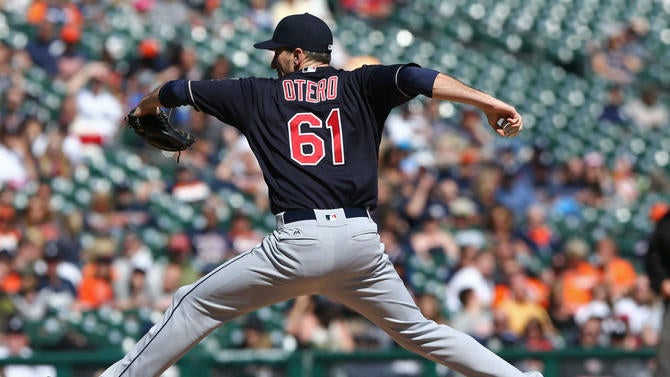
The inverse of the rotation, Cleveland's bullpen looked like a preseason weakness -- at least when pitchers other than Cody Allen and Bryan Shaw were called upon.
Yet the Indians' 'pen has managed the seventh-best ERA in baseball -- better, even, than the more-hyped units employed by the Red Sox, Giants, and Yankees. How? The simplest answer is that Terry Francona has gotten far, far more production than expected from a batch of dogsbody types that includes Dan Otero (four runs and zero homers allowed in 29 ), Joba Chamberlain, Tommy Hunter, and Jeff Manship.
Nonetheless, this unit still feels like the least stable on the Indians, in no small part because both Hunter and Manship have posted better ERA than their peripherals suggest they will heading forward. That's okay, though, because that inherent unreliability means the Indians will probably focus on finding a new middle reliever or two as the August 1 deadline approaches.
If and when that point arrives, it might be time to buy in if you haven't already. The Indians are a good team, and one that could get better.









